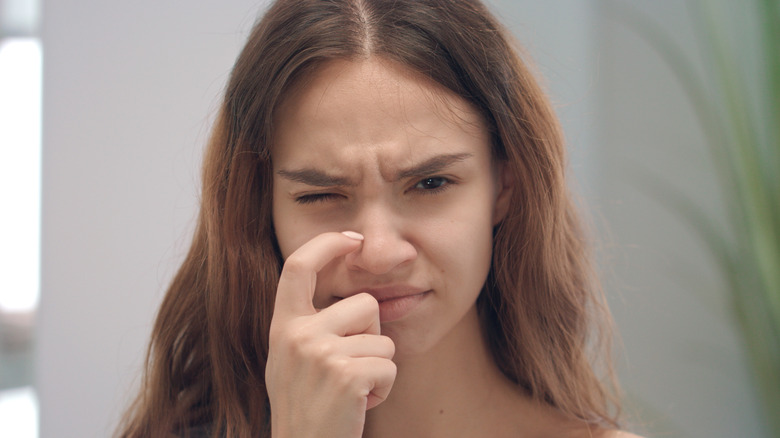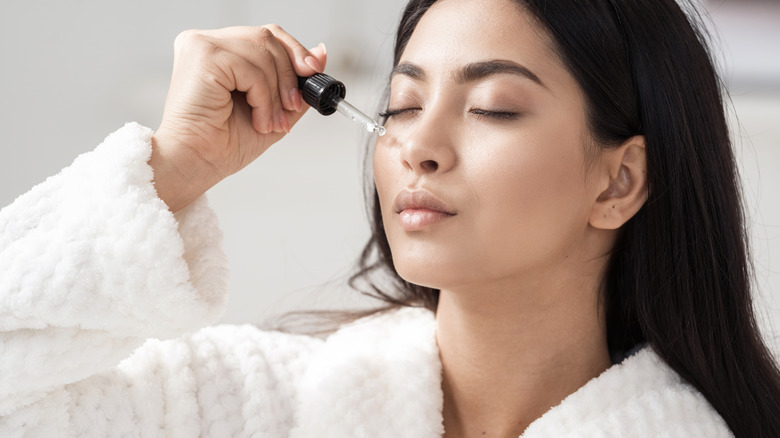What Does It Mean When You Get A Pimple In Your Nose?
There's no good place to get a pimple. If you've ever had one pop up along your upper lip or in the crease of your nose, you're familiar with how painful facial movements can become. Even worse than on the side of your nose, however, is an unexpected pimple emerging on the inside of your nose.
Odds are, a pimple on the inside of the nostril usually means that you've simply been over-plucking your nose hairs (via Livestrong). Yanking on a nose hair with a pair of tweezers doesn't always do away with the hair in one piece. Rather, leftover pieces beneath the skin can become ingrown hairs, which can resemble a pimple (via Healthline).
But grooming isn't always to blame. Sometimes a pimple develops on the inside of the nose due to a natural build-up of skin oil. Director of cosmetic and clinical research at The Mount Sinai Hospital Dr. Joshua Zeichner explains, telling Women's Health, "Oil glands are located throughout the body, including around and inside the nose. If an oil gland becomes blocked, a pimple can develop."
Pimples anywhere on the body are no fun, so what's the best way to go about treating a pimple on the inside of your nose?
How to relieve the discomfort of a pimple inside the nose
First and foremost, you'll want to avoid causing further irritation to the area. Attempting to pop or scratch at the pimple can leave you susceptible to an infection, which in severe cases can spread to other areas of the body, including the brain (via Livestrong).
If your pimple is causing you discomfort, experts at Healthline suggest using over-the-counter (OTC) pain medications, which can help reduce irritation. This can also be achieved by routinely placing a warm, wet compress on your nose throughout the day. If you're not allergic, certain types of essential oils are also thought to help alleviate pain symptoms, such as thyme, rosemary, and cinnamon. Just be sure to dilute these oils with a carrier oil before applying the solution inside the nose. Carrier oils include coconut oil or olive oil. However, medical attention may be warranted if your inner nose pimple is accompanied by vision difficulties, dizziness, rash, fever, uneven pupils, or any other worsening symptoms.
Board-certified dermatologist Dr. Y. Claire Chang offers advice on how to prevent the formation of pimples inside the nose in the first place, telling Byrdie, "Avoid triggering factors, like tweezing or plucking nasal hairs, nose picking, and nose piercing."


